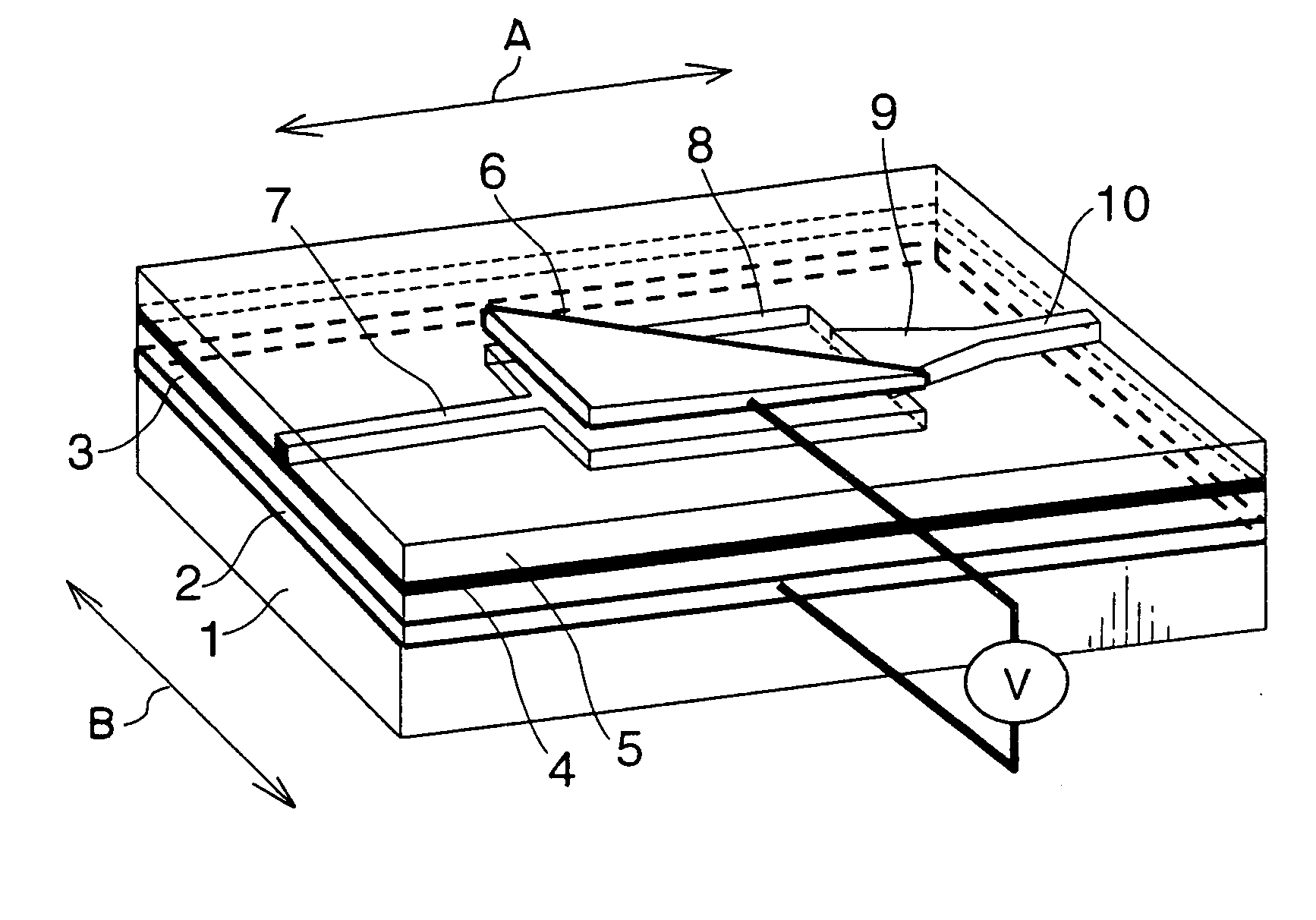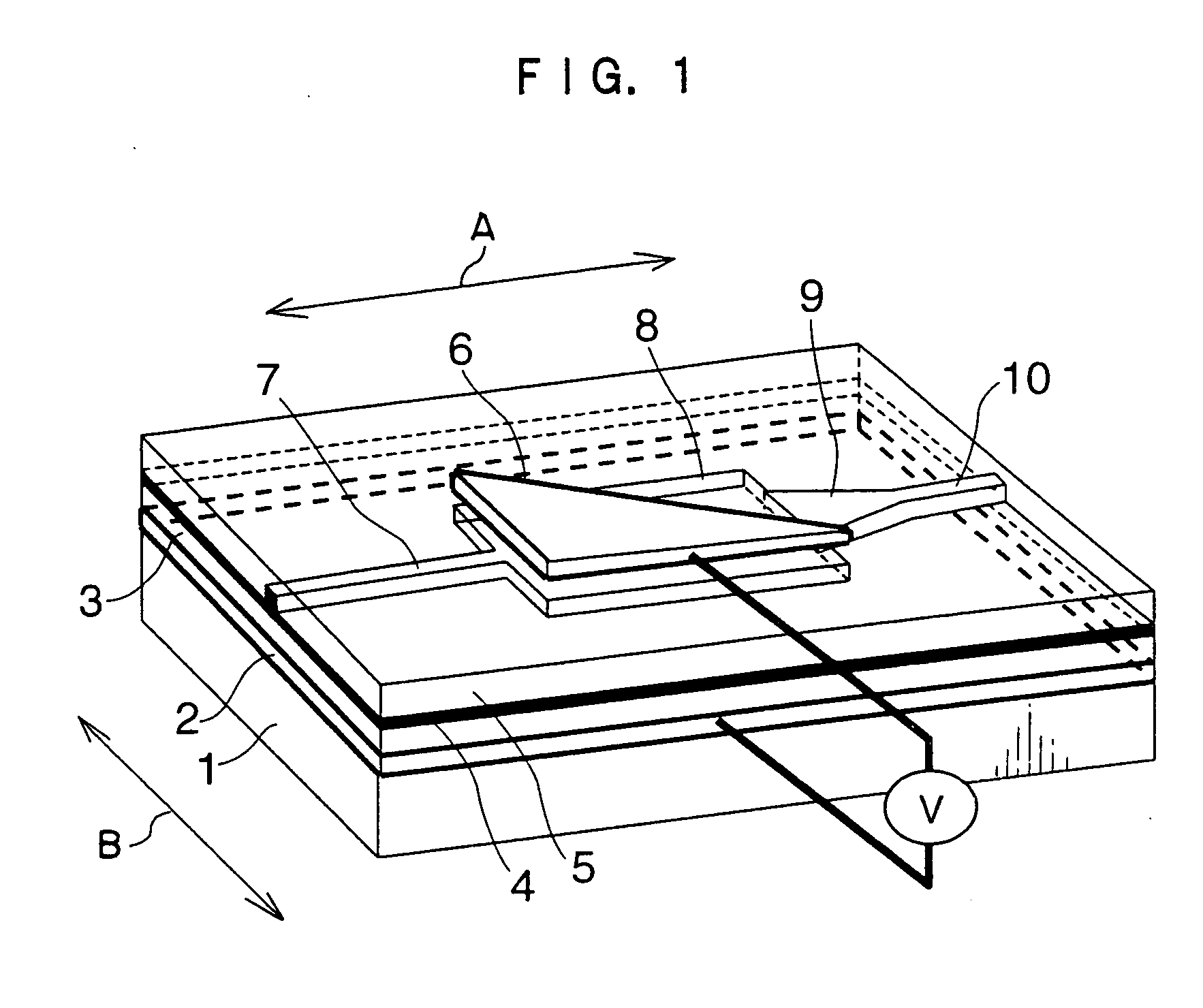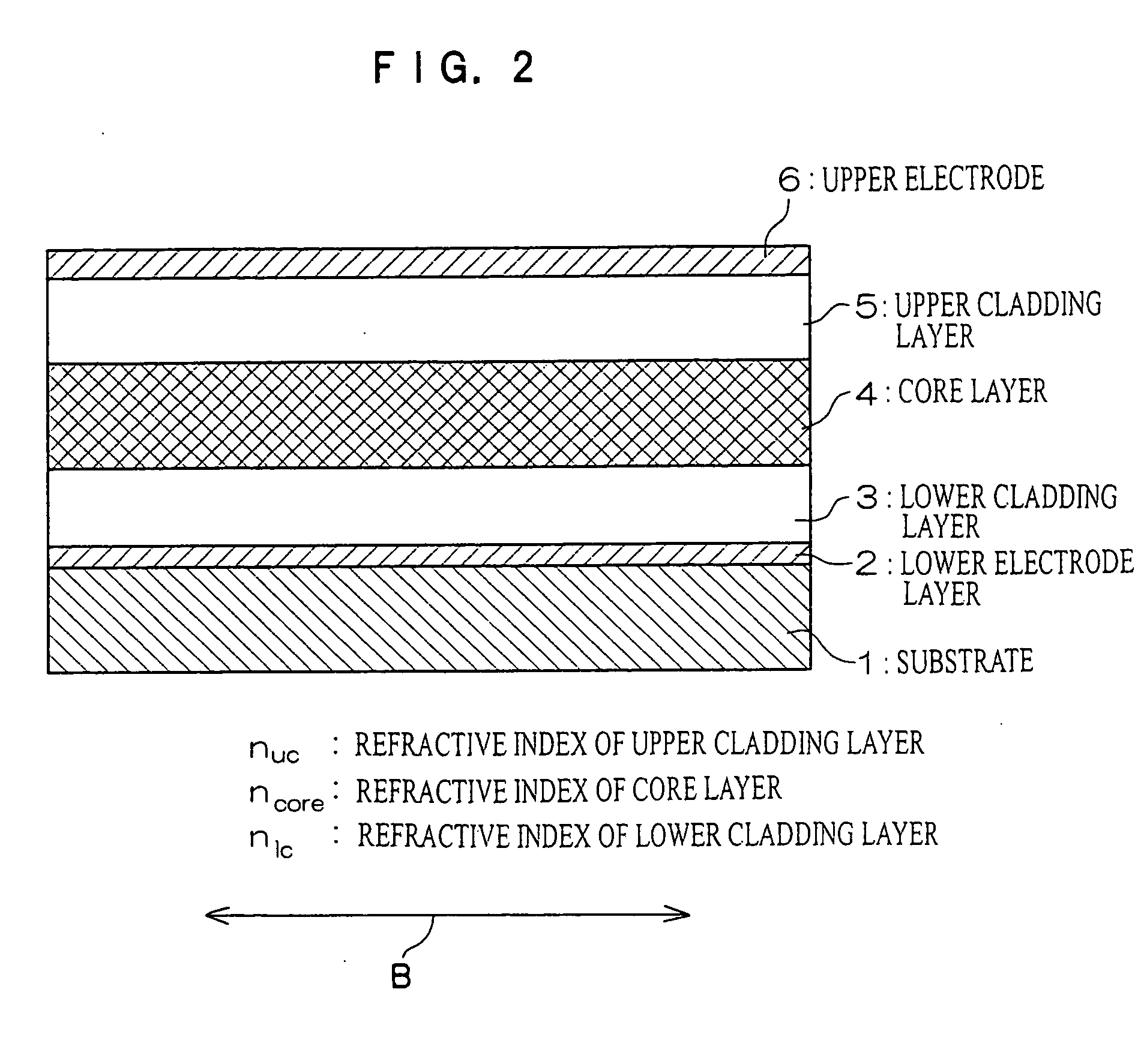Optical modulator and optical modulator array
an optical modulator and array technology, applied in the field of optical modulators and optical modulators, can solve the problems of low production yield, low production yield, and generally non-robust devices, and achieve the effects of high degree of freedom in design, excellent robustness, and easy production
- Summary
- Abstract
- Description
- Claims
- Application Information
AI Technical Summary
Benefits of technology
Problems solved by technology
Method used
Image
Examples
Embodiment Construction
[0038] As shown in FIGS. 1 and 2, an optical modulator according to this embodiment includes a substrate 1, a lower electrode layer 2 laminated on the substrate 1, a lower cladding layer 3 laminated on the lower electrode layer 2, a core layer 4 laminated on the lower cladding layer 3, an upper cladding layer 5 laminated on the core layer 4, and an upper electrode 6 laminated on the upper cladding layer 5.
[0039] Where a refractive index of the lower cladding layer 3 is nlc, a refractive index of the core layer 4 is ncore, and a refractive index of the upper cladding layer 5 is nuc, values of the refractive indexes have to be set to satisfy the following conditions, respectively:
ncore>nlc
ncore>nuc, and
nlc=nuc or nlc≠nuc.
[0040] An optical waveguide is disposed in the core layer 4. The optical waveguide is formed by an input-side single-mode waveguide 7, a wide multi-mode waveguide 8, a tapered waveguide 9 and an output-side single-mode waveguide 10. The input-side single-mode wav...
PUM
| Property | Measurement | Unit |
|---|---|---|
| thickness | aaaaa | aaaaa |
| refractive index | aaaaa | aaaaa |
| width | aaaaa | aaaaa |
Abstract
Description
Claims
Application Information
 Login to View More
Login to View More - R&D
- Intellectual Property
- Life Sciences
- Materials
- Tech Scout
- Unparalleled Data Quality
- Higher Quality Content
- 60% Fewer Hallucinations
Browse by: Latest US Patents, China's latest patents, Technical Efficacy Thesaurus, Application Domain, Technology Topic, Popular Technical Reports.
© 2025 PatSnap. All rights reserved.Legal|Privacy policy|Modern Slavery Act Transparency Statement|Sitemap|About US| Contact US: help@patsnap.com



